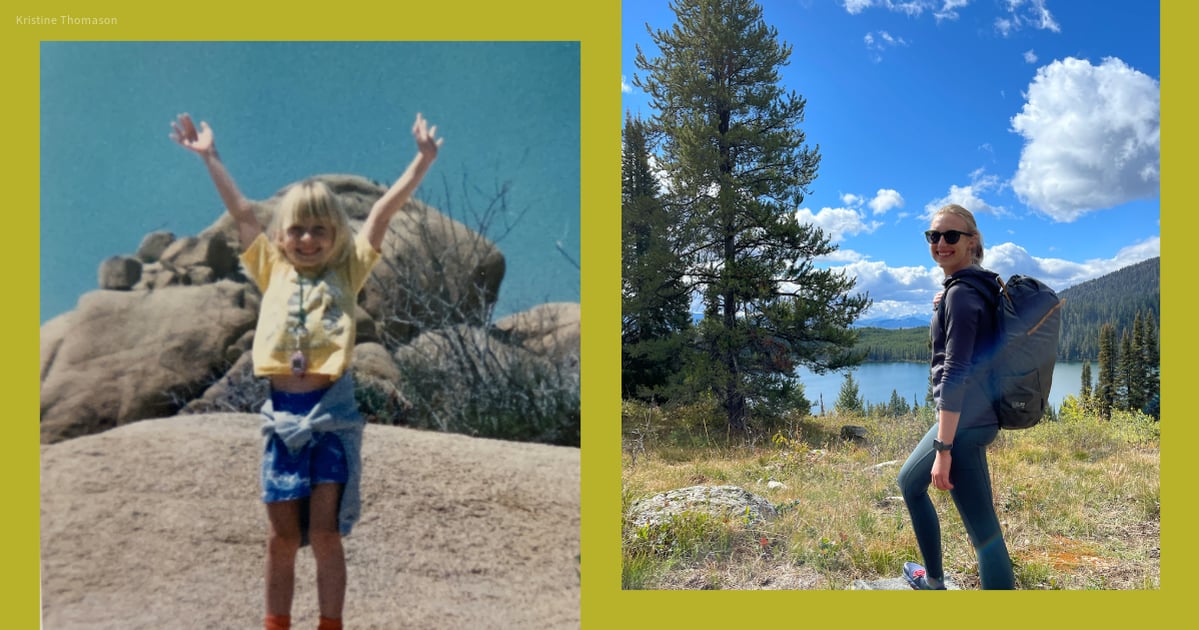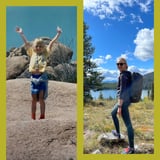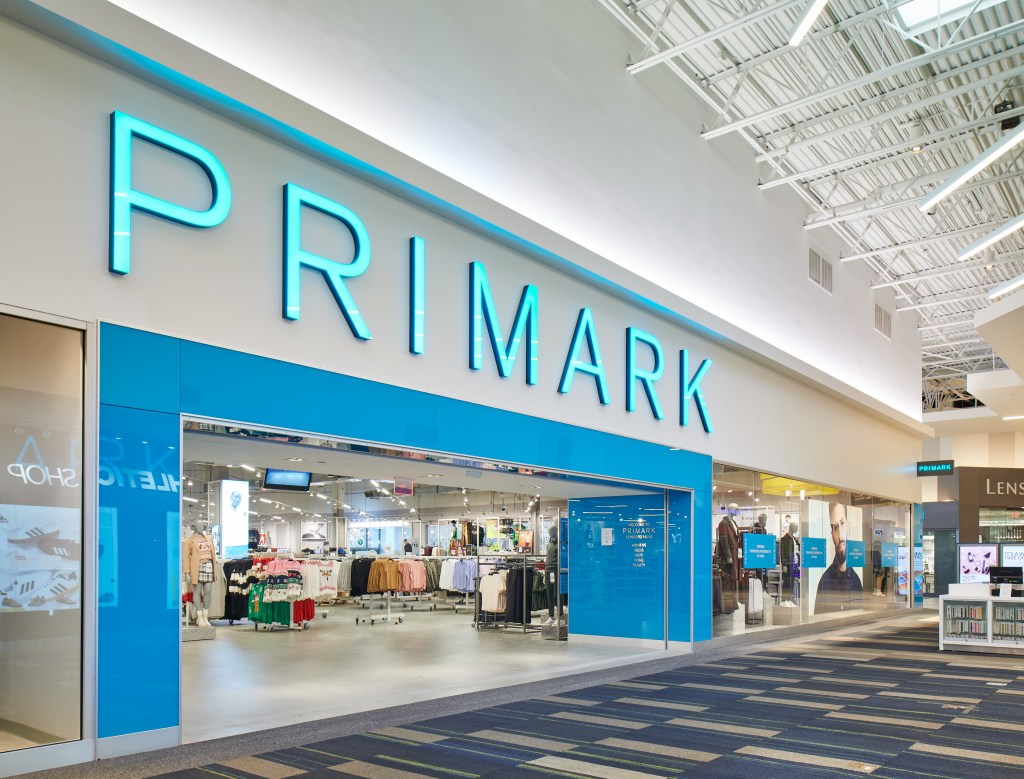The first time I visited Yosemite, I was eight years old and I felt like Dorothy entering a technicolor Oz. From the moment my family’s car emerged from the long tunnel at the entrance of the park, I was struck by the majestic mountains and lush landscapes. The view was like a painting: In the foreground, the staggering granite face of El Capitan stretched thousands of feet high; in the background, the curved peak of Half Dome pierced the impossibly blue sky. It was the closest I’d ever felt to the magic I saw in the movies or read about in my favorite books. This was a mystical world, suspended somewhere between reality and fantasy.
Yosemite was the treasure at the end of a rainbow – or, at least, the end of a seven hour drive from Southern to Northern California with my dad and little sister. At the time, my parents were in the middle of a divorce, and my world felt tumultuous. But in this place of otherworldly beauty, I experienced a kind of peace that my mind so desperately needed. I felt grounded. I felt free.
For the next week, we hiked the various trails all over the park, carefully treading the stone steps that hugged Vernal Falls. At the base of Half Dome, I mentally vowed to complete the iconic yet strenuous hike one day, when I was old enough. We dipped in the lagoon beneath Bridal Veil Falls, and I bravely swam right under the point where the falls crashed into the pool, letting it wash over my body, feeling part of something so much bigger than myself. At night, we gazed at the stars and my dad spouted facts about the nature around us, along with his own memories of Yosemite as a child.
In those quiet moments, I felt connected to all of my ancestors who enjoyed the wonder of the National Parks, and dreamed of the days I would share these special places with my own children.
You see, I come from a long line of National Parks’ lovers. My mom’s parents, who were immigrants, used to pack her up in the car nearly every weekend and drive two hours from Los Angeles to Joshua Tree. In the quiet expanse of the desert, these survivors of World War II were able to find unparalleled peace – my mom remembers that my grandfather was never happier than among the sandy landscape and watercolor sunsets.
For my dad, a child of four siblings, the National Parks were the destinations for their family roadtrips. After visiting Death Valley National Park for the first time, my grandmother had the inspired idea to bring her entire 5th grade class on trips to this strange yet lovely place, where you could see the highest point in the continental United States (Mt. Whitney) while standing at the lowest elevation in the Western Hemisphere. It became a tradition that grew every year: Students and chaperones piled into a large school bus, with my grandmother and her wild red-hair at the helm, a megaphone in hand (in our family lore, my grandma was unquestionably the original Ms. Frizzle). Here, she brought the textbook to life, teaching students about how mountains and valleys were formed and how salt crystallized slowly, over centuries – it was all there, in the park.
My own childhood is punctuated by visits to these incredible places: Roadtrips that wove from Carlsbad Caverns in New Mexico to Yellowstone in Wyoming; stops at the Grand Canyon en route to Sedona; and multiple trips to Yosemite through my teen years. Amid the pandemic, I even moved from my Brooklyn apartment to a small house outside of Joshua Tree National Park (which was also the very first National Park I ever visited), finding respite in the desert, like the generations before me.
During every trip and every experience in the parks, that same sense of peace followed me. In the middle of Joshua Tree, for instance, where there isn’t a trace of cell service – the only option is to disconnect from the stress and chaos of modern life. As I would amble through the safe, well-maintained trails or scramble to the tops of boulders, my mind was as expansive as the vista. In those quiet moments, I felt connected to all of my ancestors who enjoyed the wonder of the National Parks, and dreamed of the days I would share these special places with my own children.
When I asked my parents why it was so important for my sister and I to experience the National Parks, they both told me that these lands were the setting to some of the fondest memories from their own childhoods – so, of course, they wanted us to pass that joy down to us. As my dad put it, there is so little time parents truly get to spend with their kids, and the amount you do get goes by so fast. Having the opportunity to visit a place where there are no screens or distractions, where time seems to slow down, even just for a little while – that is the rarest magic of all.
So when headlines struck my media feeds that nearly 1,000 people were laid off from the National Park Service recently, my stomach sank. These layoffs represent approximately five percent of employees, in an already understaffed workforce.
“I honestly can’t imagine how the parks will operate without my position. I mean, they just can’t. I am the only EMT at my park and the first responder for any emergency. This is flat-out reckless,” Alex Wild, a former Yosemite park ranger wrote in a heart-wrenching Instagram post following the loss of his job. “These are the people who teach your [Junior] Rangers, build your trails, clean your restrooms, rescue injured visitors, and keep the parks operating. We are not the excess. We are essential to maintaining access to parks.”
These employees are the heartbeat of the National Parks Service, and their absence will undoubtedly impact the visitor experience and the safety of those who visit the parks. Among a laundry list of potential ramifications, fewer employees means they may need to roll back their hours and delay maintenance projects. There will be fewer guided tours, and a lack of educators to teach visitors about the rich history and resources of these regions. In short: The accessibility and functionality of the National Parks will suffer.
To me, my family, and so many others, this feels like a tremendous blow – not only to the future of the parks themselves, but also the legacy of the Park Service. While five percent may not sound dramatic, it represents a massive number of people across the nation who have lost their livelihoods (and, for those who lived in park housing, their homes). What’s more, it feels indicative of a larger trend we’re seeing when it comes to the current administration’s choices about funding: A complete disregard for the well-being of the American people.
After all, in a time when we’re increasingly disconnected from the natural world, when the mental health crisis is peaking, and when we are desperately in need of community – our society needs access to safe and protected nature more than ever. Spending time in the natural world has been well-studied as an effective way to support mental well-being and physical health – plus, the parks provide a space for loved ones of all backgrounds to create lasting memories together.
In 1916, the National Park Service was created with a concrete mission: “Promote and regulate the use of the Federal areas known as national parks, monuments and reservations…which purpose is to conserve the scenery and the natural and historic objects and the wild life therein and to provide for the enjoyment of the same in such manner and by such means as will leave them unimpaired for the enjoyment of future generations.”
After recent events, this 119-year legacy feels eerily fragile. I fear this is just the beginning of the degradation and deprioritization of our nation’s public lands. Whether the motive is sinister or self-serving or simply impetuous, only time will tell. What I do know is this: The idea of losing these precious lands feels more than disappointing. It feels like one large step toward eroding the beautiful, vibrant country we call home.
Kristine Thomason is a lifestyle writer and editor based in Southern California. Previously, she was the health and fitness director at Mindbodygreen and the fitness and wellness editor at Women’s Health. Kristine’s work has also appeared in PS, Travel + Leisure, Men’s Health, Health, and Refinery29, among others.




